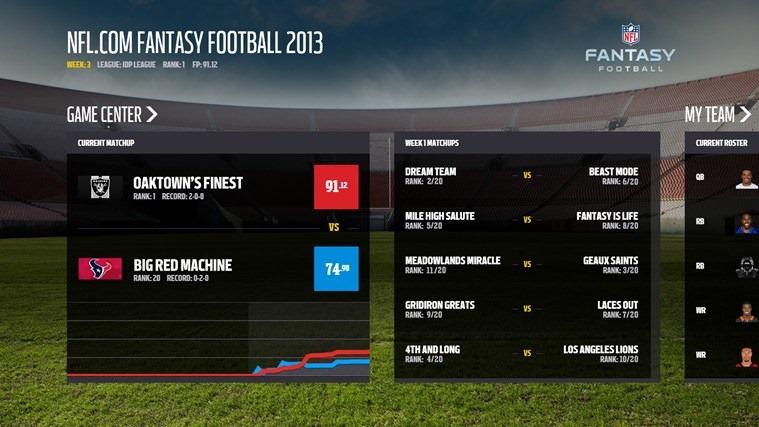
Microsoft’s big team-up with the NFL isn’t just about enhancing the quality of streaming sports content on the upcoming Xbox One console. The deal also brings Microsoft into every team’s stadium, not only through corporate branding, but through the use of a pair of new Surface apps built for use on the sidelines. Most fans will never see these apps in action, but Digital Trends scored an up-close look to get a sense of what NFL players and coaches will be seeing as they tap away at their tablets.
The Electronic Medical Records (EMR) app from eClinicalWorks is designed to help coaches, doctors, and other league officials maintain detailed records on player health and injury histories. The app’s developer already provide similar software to hospitals and other healthcare facilities. The app the NFL will use is stripped down and optimized for the sorts of conditions that might crop up on the field.
The app maintains player injury information across the entire league using medical imaging technology, so all data is stored remotely on a server.
In the app, players are sorted either by their name or their number, though Windows 8-enabled search functions are available as well. The app maintains player injury information across the entire league using medical imaging technology, so all data is stored remotely on a server. When players jump to a new team or enter into free agency, the app automatically blocks the former team from accessing those records.
Opening up an individual player’s page reveals a wealth of information broken down across a wide range of categories, from open injuries to medical history, past hospitalizations, surgeries, lab diagnostics, current medications, and even allergies. Open injuries are prominently displayed near the front of a profile; the list includes the nature of the injury and a visual indicator of the severity of the injury.
Creating a new injury report, either on the field or in the exam room, is a simple process. An anatomical view of a person appears on the right side of the screen. The attending physician or medical examiner taps the location that’s been injured and adds in any early notes on the type and severity of the injury. All of these details are easily recorded on the field so that the doctor can access them later in an exam room.

The other Surface-powered sideline app is X2, a testing program designed to detect and measure concussion severity, one of the biggest threats facing football players today. The test is broken into multiple parts, with the first part focusing entirely on symptoms. Players log how they’re feeling using a 0-6 scale based on a variety of symptoms that spread out across six pages. Everything is measured. From basic stuff like headaches, nausea, and neck pain, to intangibles like “Are you feeling ‘in a fog,'” and “Are you having difficulty concentrating?”
Next up is the SAC (Standardized Assessment of Concussion) orientation test. The Surface goes back to the examiner here, and the player is asked to respond to a number of simple questions and tasks, such as the date, reciting digits and months backwards, and basic word recall. A Coordination test follows; it’s similar to SAC, only here players must perform a variety of non-demanding physical activities. Finally, a delayed recall test asks the player to remember words that came up during the SAC test.
All of these details are easily recorded on the field so that the doctor can access them later in an exam room.
Along with the sidelines apps made exclusively for the league, Microsoft and NFL.com have released a fantasy football app which is a Windows 8 exclusive. It’s largely the same as any other fantasy football app in terms of the featureset: you’ve got league rosters and reports, trades, add/drops, standings… everything you’d expect. The app also feeds in news and expert analysis from NFL.com.
The main feature that sets it apart from other fantasy apps is a Live Chart viewing option for any given weekly match-up. As the week’s games progress and points are scored, the graph-like Live Chart automatically updates with timestamped highlight moments. Tapping on one of these calls up a video window, allowing you to check out the play. It doesn’t threaten to change the way we play fantasy football, but it’s a welcome luxury, provided of course that your league calls NFL.com its home.




